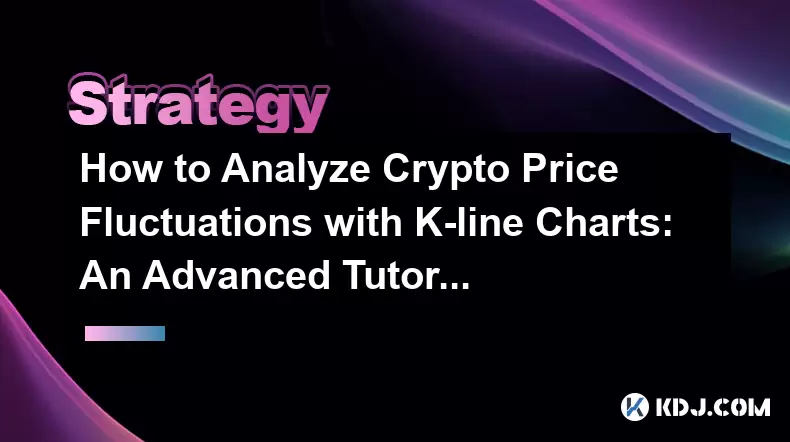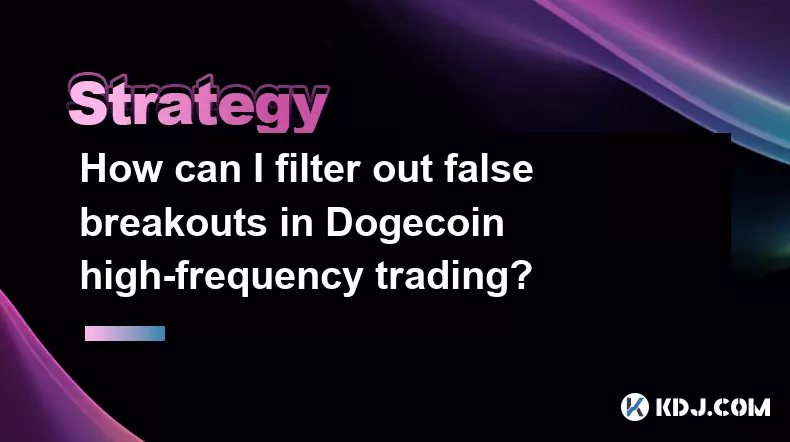-
 bitcoin
bitcoin $112195.049338 USD
2.42% -
 ethereum
ethereum $4124.915858 USD
2.81% -
 tether
tether $1.000570 USD
0.02% -
 xrp
xrp $2.861568 USD
2.25% -
 bnb
bnb $1000.346670 USD
3.04% -
 solana
solana $209.070819 USD
3.38% -
 usd-coin
usd-coin $0.999870 USD
0.02% -
 dogecoin
dogecoin $0.235379 USD
2.65% -
 tron
tron $0.335681 USD
-0.20% -
 cardano
cardano $0.803501 USD
3.38% -
 hyperliquid
hyperliquid $47.120881 USD
3.56% -
 chainlink
chainlink $21.501300 USD
3.44% -
 ethena-usde
ethena-usde $1.000571 USD
0.02% -
 avalanche
avalanche $29.793378 USD
3.62% -
 stellar
stellar $0.366964 USD
2.42%
How to Analyze Crypto Price Fluctuations with K-line Charts: An Advanced Tutorial for Beginners
K-line charts are vital in crypto trading, showing price trends and patterns like hammers or engulfing signals to help predict market moves.
Jun 13, 2025 at 04:56 am

Understanding the Basics of K-line Charts in Cryptocurrency Trading
K-line charts, also known as candlestick charts, are essential tools for analyzing price movements in cryptocurrency markets. Each K-line represents a specific time interval and provides information about the opening, closing, high, and low prices during that period. The body of the candle indicates whether the price closed higher or lower than it opened, while the wicks (or shadows) show the highest and lowest prices reached.
In the context of crypto trading, understanding how to interpret these patterns is crucial for making informed decisions. For instance, a long green candle typically signals strong buying pressure, whereas a long red candle suggests intense selling activity. Recognizing these visual cues allows traders to anticipate potential market shifts.
Identifying Common Candlestick Patterns in Crypto Markets
Several candlestick formations can offer insight into market sentiment and possible future price action. Among the most commonly observed patterns are:
- Hammer: A bullish reversal pattern characterized by a small body at the top with a long lower wick.
- Shooting Star: A bearish reversal pattern that appears similar to the hammer but forms after an uptrend.
- Engulfing Pattern: This occurs when one candle completely engulfs the previous candle’s range, signaling a potential trend reversal.
- Doji: Represents indecision in the market where the opening and closing prices are nearly equal.
These patterns become more reliable when they appear near key support or resistance levels. Traders often combine them with other technical indicators to confirm signals before executing trades.
Using Timeframes Effectively for K-line Analysis
Choosing the appropriate timeframe is vital when using K-line charts for crypto analysis. Short-term traders might focus on 1-minute or 5-minute charts to capture quick moves, while swing traders may prefer hourly or daily charts to identify broader trends.
It's important to note that higher timeframes, such as daily or weekly charts, tend to provide more accurate signals due to reduced noise from short-term volatility. Beginners should start with daily charts to get a clearer picture of overall market direction before diving into intraday trading.
When analyzing multiple timeframes, aligning your entry points across different scales can increase the probability of successful trades. For example, if a bullish pattern appears on both the 4-hour and daily chart, it strengthens the likelihood of an upward move.
Incorporating Volume Analysis with K-line Charts
Volume plays a critical role in confirming candlestick patterns. A significant increase in volume during a particular candle enhances the validity of its signal. For instance, a large green candle accompanied by high volume reinforces the strength of buyers entering the market.
Conversely, if a candle forms without substantial volume, it may indicate weak participation and thus less reliability in the pattern. Tools like On-Balance Volume (OBV) or Volume Weighted Average Price (VWAP) can be used alongside K-lines to gain deeper insights into market dynamics.
Traders should also watch for divergence between price action and volume. If prices rise but volume declines, it could suggest that the uptrend is losing momentum and may soon reverse.
Combining K-line Charts with Technical Indicators
While K-line charts alone can provide valuable information, combining them with technical indicators improves accuracy. Popular choices include:
- Moving Averages (MA): Helps identify trend direction and potential support/resistance areas.
- Relative Strength Index (RSI): Measures overbought or oversold conditions, which can signal reversals.
- Bollinger Bands: Indicates volatility and potential breakout points.
For example, a bullish engulfing pattern forming near the lower Bollinger Band may suggest a strong buying opportunity when RSI is below 30, indicating oversold conditions.
Beginners should experiment with different combinations of indicators to find what works best for their trading style. However, avoid overcrowding charts with too many tools, as this can lead to confusion and false signals.
Practical Steps to Analyze Crypto Prices Using K-line Charts
To begin applying K-line analysis effectively, follow these steps:
- Select a Reliable Charting Platform: Use platforms like TradingView, Binance, or CoinMarketCap that offer customizable candlestick charts.
- Choose the Right Timeframe: Start with daily charts to understand the broader trend before switching to shorter intervals for entry/exit points.
- Identify Key Support and Resistance Levels: Mark horizontal lines where price has historically reversed. These levels help determine where candlestick patterns carry more weight.
- Look for Reversal Patterns Near Key Levels: Pay attention to hammers, shooting stars, and engulfing patterns that form around these zones.
- Confirm with Volume and Indicators: Ensure that the candlestick pattern coincides with increased volume and aligns with indicator readings for stronger signals.
- Set Stop-Loss and Take-Profit Points: Always define risk parameters before entering a trade based on K-line setups.
By following these practical steps, beginners can build a structured approach to interpreting K-line data and improve their decision-making process in real-time trading environments.
Frequently Asked Questions (FAQs)
Q: Can K-line charts be used for all cryptocurrencies?Yes, K-line charts apply universally across all cryptocurrencies. Whether you're analyzing Bitcoin, Ethereum, or any altcoin, the principles remain consistent. However, some lesser-known tokens may exhibit erratic behavior due to low liquidity, so extra caution is advised.
Q: How do I know if a candlestick pattern is reliable?Reliability depends on several factors including timeframe, volume confirmation, and proximity to key support/resistance levels. Patterns that occur on higher timeframes and are supported by strong volume tend to be more trustworthy.
Q: Should I rely solely on K-line charts for trading decisions?While K-line charts are powerful, they work best when combined with other analytical tools like volume indicators, moving averages, and trendlines. Sole reliance on candlestick patterns can result in missed opportunities or false signals.
Q: What is the best way for beginners to practice K-line analysis?Start by studying historical charts and identifying common patterns manually. Many platforms allow users to draw on charts and save annotations. Additionally, paper trading (simulated trading without real money) helps test strategies in live market conditions without financial risk.
Disclaimer:info@kdj.com
The information provided is not trading advice. kdj.com does not assume any responsibility for any investments made based on the information provided in this article. Cryptocurrencies are highly volatile and it is highly recommended that you invest with caution after thorough research!
If you believe that the content used on this website infringes your copyright, please contact us immediately (info@kdj.com) and we will delete it promptly.
- Navigating Misinformation: Ensuring Safety in the Pi Network Ecosystem
- 2025-09-29 14:25:13
- XRP Price Prediction: September 29th's Crypto Comeback?
- 2025-09-29 14:25:13
- Polkadot vs. Lyno AI: Decoding the Price Forecast and AI Revolution
- 2025-09-29 14:30:01
- Trump's Brahmastra: Can Stable Coin Save the US Economy?
- 2025-09-29 14:45:17
- Pi Movement: Utility, Community, and the $314,159 Dream
- 2025-09-29 14:45:17
- Ruvi AI: Revolutionizing the Creator Economy with AI-Powered Crypto
- 2025-09-29 14:30:01
Related knowledge

Practical parameter settings for a Bitcoin multi-timeframe moving average system
Sep 18,2025 at 10:54pm
Optimizing Timeframe Combinations for Bitcoin Trading1. Selecting appropriate timeframes is crucial when building a multi-timeframe moving average sys...

How can I filter out false breakouts in Dogecoin high-frequency trading?
Sep 22,2025 at 01:00am
Understanding False Breakouts in Dogecoin Trading1. A false breakout occurs when Dogecoin's price appears to move beyond a defined support or resistan...

Techniques for identifying tops and bottoms in the Bitcoin on-chain NVT model
Sep 20,2025 at 07:54pm
Understanding the NVT Model in Bitcoin Analysis1. The Network Value to Transactions (NVT) ratio is often described as the 'P/E ratio' of the cryptocur...

What does the surge in open interest in Bitcoincoin futures mean?
Sep 20,2025 at 11:18pm
Understanding the Surge in Dogecoin Futures Open Interest1. A surge in open interest within Dogecoin futures indicates a growing number of active cont...

How can I use the Ethereum USDT premium to gauge market sentiment?
Sep 18,2025 at 11:55pm
Understanding the Ethereum USDT Premium1. The Ethereum USDT premium refers to the price difference between USDT (Tether) traded on Ethereum-based plat...

What should I do if Ethereum staking yields decline?
Sep 20,2025 at 06:18am
Understanding the Causes Behind Declining Ethereum Staking Yields1. The Ethereum network transitioned to a proof-of-stake consensus mechanism with the...

Practical parameter settings for a Bitcoin multi-timeframe moving average system
Sep 18,2025 at 10:54pm
Optimizing Timeframe Combinations for Bitcoin Trading1. Selecting appropriate timeframes is crucial when building a multi-timeframe moving average sys...

How can I filter out false breakouts in Dogecoin high-frequency trading?
Sep 22,2025 at 01:00am
Understanding False Breakouts in Dogecoin Trading1. A false breakout occurs when Dogecoin's price appears to move beyond a defined support or resistan...

Techniques for identifying tops and bottoms in the Bitcoin on-chain NVT model
Sep 20,2025 at 07:54pm
Understanding the NVT Model in Bitcoin Analysis1. The Network Value to Transactions (NVT) ratio is often described as the 'P/E ratio' of the cryptocur...

What does the surge in open interest in Bitcoincoin futures mean?
Sep 20,2025 at 11:18pm
Understanding the Surge in Dogecoin Futures Open Interest1. A surge in open interest within Dogecoin futures indicates a growing number of active cont...

How can I use the Ethereum USDT premium to gauge market sentiment?
Sep 18,2025 at 11:55pm
Understanding the Ethereum USDT Premium1. The Ethereum USDT premium refers to the price difference between USDT (Tether) traded on Ethereum-based plat...

What should I do if Ethereum staking yields decline?
Sep 20,2025 at 06:18am
Understanding the Causes Behind Declining Ethereum Staking Yields1. The Ethereum network transitioned to a proof-of-stake consensus mechanism with the...
See all articles










































































